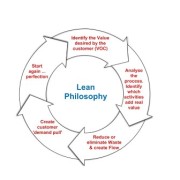Are We Overthinking Strategy?
I have been a student of business strategy for most of my 40 year career and have seen fads come and go. But even with this background I was surprised to read in recent Harvard Business Review articles that:
- Corporations spend on average 7 months of the year in strategic planning, and
- There are now over 80 recognised strategy options that have been introduced since the ‘grand-daddy’ of strategy, the Ansoff Matrix was introduced in 1958.
Today, those responsible for guiding the future of businesses face a constant barrage of advice on what is the ‘next big thing’ with respect to strategic options. Be it PEST, Red Queen, 6 Sigma, Diamond Model, Blue Ocean strategy or any of the 80+ options listed by HBR, these are simply tools to help us better achieve the objective of strategy – to create, capture and retain long term value (equity).Given the vast array of options available to business owners and managers in developing business strategies, is it any wonder those in the ‘C-suite’ are taking so long to define their strategic direction. However, regardless of whether we are defining a strategy for a small business, an individual department, a not-for-profit or an MNC, the objective is to come up with an overall game plan to clarify the ‘where to play/how to win?’ questions. We should not be overcomplicating the process of determining our business strategy. What makes a good strategy? Professor Richard Rumelt of UCLA Anderson School of Management suggests a good strategy is simple and compelling; offering a simple solution to a problem (‘simple’ meaning no more complex than it needs to be: not simplistic). He goes further to propose a good strategy is based on a robust diagnosis of the situation and the problem to be solved and follows a clear policy framework that provides constraints for the strategy and allows participants to co-ordinate their actions and to create a focused outcome. This definition is consistent with what I have found consulting as a business strategist and acknowledged by A. G. Lafley and Roger L. Martin in their excellent book, Playing to Win – How Strategy Really Works.
- A good strategy identifies the critical challenges to the business, both internal and external
- It clarifies the key drivers behind value creation
- It determines the ‘must win’ battles
- And above all else, it influences action, and: – To influence action it must be remembered; – To be remembered it must be understood, and: – To be understood it must be simple.
Simplifying strategy development The vast array of strategic tools listed by HBR have developed over time as markets and business has matured. Each has, or has had, its own place in the strategy of business and is, or was, valuable in helping define and execute strategy. But there are some more basic questions that we should be asking to help develop a framework for our strategies. While I have developed and used my own questions over the years, I found the 4 simple questions posed by Lafley and Martin totally reflect my own experience and provide the perfect, simple foundation on which to build our strategy:
- What are our winning aspirations? Depending on the purpose of our strategy, these will be defined at a personal, departmental or enterprise level. – What is our purpose? – What do we want to achieve?
- Where will we play? – Geographies and demographics? – What is our target market? – Who is our ideal client? – Channels to market?
- How will we win? – Sell it for more or make it for less? – Value proposition? – Competitive advantage?
- What capabilities do we need? – Infrastructure – Human resources – Training and development
- What structure and management systems do we need? – Organisation structure – Systems and processes – KPIs and reporting
Why do strategies fail? To quote Robert Burns, “despite the best laid plans of mice and men, plans go astray”. Strategies will still fail and in developing a strategic plan we should consider why this is and what can be done to avoid it. Over the years I have found the most common causes of strategy failure to be:
- Whether the result of poor planning, changes in the environment, or unrealistic expectations, the plan simply was not right.
- Markets change, today faster than ever. Strategies should take a mid to long-term view of the business but should also be regularly reviewed and ‘tweaked’ to ensure they remain relevant to the current environment
- Having a strategy for strategy’s sake. As mentioned above, a strategy needs to incite and influence action. Developing a strategic plan and ‘putting it on the shelf’ is a waste of time, money and effort.
- Strategic implementation can be delegated but it cannot be abdicated. Management need to ‘walk the talk’ and demonstrate they are serious about the strategic direction being taken.
- Not everyone was ‘on the bus’. All too often change is resisted and this leads to failure of strategies. Senior management need to ensure that everyone knows the direction the business is heading and that line-managers and influencers are ‘on board’. If not, action needs to be taken and hard decisions made to cauterise or amputate the problem.
- Focussing on measurement and not the actions required to achieve the results
So while our strategy may need a strategy, simplifying how we approach developing our strategy may deliver us a more practical outcome in much less time.
















